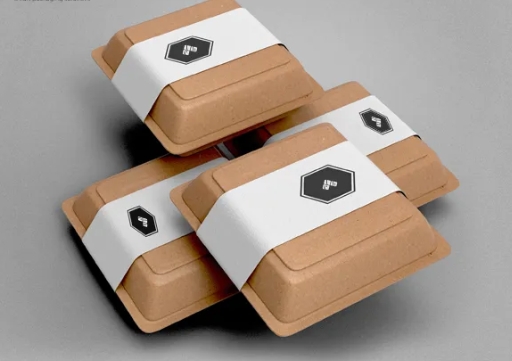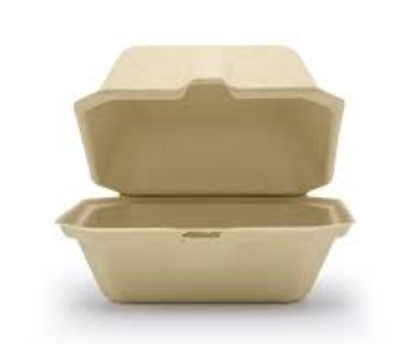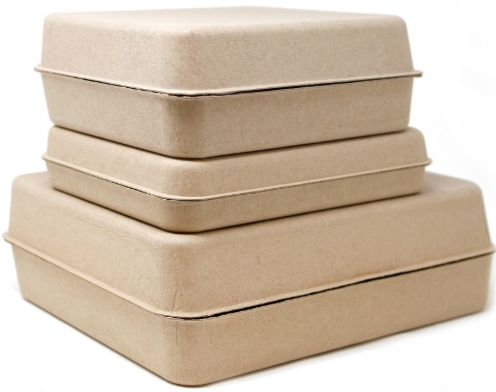
Content Menu
● What Are Clamshell Boxes?
● What Are Folding Cartons?
● Comparing Clamshell Boxes and Folding Cartons
>> Design and Material Composition
>> Protection and Security
>> Branding and Shelf Appeal
>> Cost Effectiveness
>> Environmental Impact
>> Consumer Usability
● When to Choose Clamshell Boxes
● When to Choose Folding Cartons
● Real-World Applications and Case Scenarios
>> Technology and Electronics
>> Cosmetics and Skincare
>> Food Products
>> Retail Tools and Accessories
● Conclusion
● FAQ
>> 1. What products are best suited for clamshell boxes?
>> 2. Are folding cartons environmentally friendly?
>> 3. Can clamshell boxes be customized?
>> 4. Are folding cartons cost-effective?
>> 5. Which option is easier to open?
Retail packaging is a critical component in marketing, protecting, and delivering products. It not only influences a buyer's perception but also plays a pivotal role in a brand's identity and operational efficiency. Two of the most popular packaging formats used in modern retail are clamshell boxes and folding cartons. While both serve similar purposes, their structural differences offer unique advantages and disadvantages depending on the product's requirements.
This article will explore a detailed comparison of clamshell boxes and folding cartons in the context of design, protection, branding, sustainability, cost, and user experience. Whether you're a product manufacturer, packaging designer, or retail business owner, understanding the strengths and weaknesses of each option will guide you in choosing the best packaging format for your needs.

What Are Clamshell Boxes?
Clamshell boxes are a type of rigid packaging made primarily from plastic or thermoformed materials. The packaging design generally includes two halves connected by a hinge mechanism. When folded over each other, they form an enclosed unit that can snap shut or be heat-sealed for additional security.
These boxes are known for:
- A durable exterior that preserves product integrity
- Tamper-evident locks or seals
- Transparency that allows customers to see the product
- Resistance to crushing or bending during transport
Clamshell boxes are commonly used in electronics packaging, consumer goods, retail hardware, and food packaging, especially for items that benefit from visible product display.
What Are Folding Cartons?
Folding cartons are lightweight packaging solutions made from paperboard. The material is printed, die-cut, creased, and folded into a box shape. Cartons are shipped flat and assembled during production or at the point of sale.
Characteristics include:
- Printable surfaces for high-impact branding
- Cost efficiency in high-volume productions
- Eco-friendly options made from recyclable or biodegradable materials
- Flexibility in design shapes and sizes
Folding cartons are prevalent in industries such as cosmetics, foods, pharmaceuticals, lightweight electronics, and personal care products.
Comparing Clamshell Boxes and Folding Cartons
Design and Material Composition
Clamshell Boxes are typically made of PVC, PET, or biodegradable plastics. These materials ensure strength and allow for product visibility. The plastic construction provides a modern, sleek look, often used to convey durability and innovation.
Folding Cartons, on the other hand, are made from cardboard or paperboard. They range in thickness and can be printed with various finishes like matte, gloss, embossing, and spot UV. Their design flexibility supports brand storytelling and has a more premium aesthetic for some product categories.
Verdict: If you need structural strength and product visibility, clamshells win. For branding and personalization, folding cartons excel.
Protection and Security
Clamshell packaging offers superior protection. Its rigid body reduces the risk of the product being tampered with or damaged during transport. They are often used in retail environments where theft-prevention is a concern, particularly for compact electronics, items with detachable parts, or small valuables.
Folding cartons provide moderate protection and can incorporate inserts or inner compartments for added security. They are ideal for less delicate products or items that are also wrapped internally. While less tamper-resistant, they can still be closed using secure tabs, seals, or glued flaps.
Verdict: Clamshells offer a higher level of physical security. Folding cartons offer more versatility but lower inherent protection.
Branding and Shelf Appeal
One of the strongest attributes of folding cartons is the ability to customize them inside and out. Brands can utilize every panel for storytelling, include QR codes or loyalty incentives, and even create unique shapes to distinguish themselves on the shelf.
Clamshell boxes rely mainly on inserts or stickers for branding. While the transparency of the box allows the product to sell itself, the surface area for promotional elements is limited.
Verdict: Folding cartons are the better option for eye-catching design, marketing messages, and shelf appeal.
Cost Effectiveness
Producing clamshell packaging is typically more expensive due to the materials and tooling required to mold the plastic. This results in a higher cost per unit, particularly for custom shapes or small production runs.
Folding cartons benefit from lower production setup fees, are easier to print and customize, and ship flat in bulk, reducing logistics and warehousing costs. They are the preferred choice for budget-conscious businesses or those seeking short-run flexibility.
Verdict: Folding cartons are more cost-effective, especially for high-volume runs.
Environmental Impact
Traditional clamshell packaging materials like PVC are difficult to recycle and are often criticized for their contribution to plastic waste. Although innovations in biodegradable plastics and eco-friendly thermoplastics are emerging, widespread adoption remains limited.
Folding cartons are widely accepted in global recycling systems. Made from renewable resources, they support sustainable branding and reduce a company's carbon footprint. They can be produced using FSC-certified materials and printed with soy-based inks.
Verdict: Folding cartons align better with sustainable packaging goals.
Consumer Usability
Opening clamshell boxes can be frustrating. Their secure structure, while effective for anti-theft purposes, often requires scissors or tools to gain access. This has led to consumer frustration, sometimes referred to as "wrap rage."
Folding cartons, however, offer easy-open and resealable features, improving customer satisfaction and interaction. They also provide a more tactile and refined unboxing experience, enhancing perceived product value.
Verdict: Folding cartons offer a more user-friendly and enjoyable unboxing experience.

When to Choose Clamshell Boxes
Clamshells may be the right fit when:
- Product theft is a concern, such as high-value, easy-to-pocket items
- The contents need visibility to drive the sale
- Additional protection is required during shipping
- Components within the packaging need to be organized and contained
When to Choose Folding Cartons
Choose folding cartons when:
- Branding and storytelling are central to your marketing strategy
- Sustainability is a core business value
- You seek cost-effective solutions for large production volumes
- Ease of consumer access is important
- The product is lightweight and doesn't require rigid protection
Real-World Applications and Case Scenarios
Technology and Electronics
A small set of earbuds may come in a clamshell to prevent tampering or theft in a retail environment. However, a premium smartphone is likely to be presented in a folding carton with layered internal compartments for accessories and manuals — offering a sophisticated unboxing experience.
Cosmetics and Skincare
Luxury skincare brands usually opt for folding cartons with foil printing and embossing to create a sense of exclusivity. Clamshells are sometimes used for blister-style packs in drugstore settings for lower-priced products.
Food Products
Fresh berries and bakery goods are often packaged in clear clamshells to show freshness and quality. Dry pantry products like cereals, energy bars, and pastas are packaged in folding cartons for stackability and branding space.
Retail Tools and Accessories
Sharp or heavy tools such as screwdrivers or batteries are usually protected in clamshell packaging, reducing the risk of injury or theft. Lightweight home accessories might use folding cartons to benefit from marketing-friendly printing and cost savings.
Conclusion
Both clamshell boxes and folding cartons have their place in the retail packaging ecosystem. The best choice depends on your product's needs, brand goals, budget, and customer expectations. Clamshell boxes provide reliability and product safety, making them ideal for security-focused packaging. Folding cartons offer versatility, visual appeal, and eco-friendly advantages that cater to businesses focused on branding and sustainability.
Investing in the right packaging isn't just about aesthetics — it's about aligning your packaging strategy with your brand promise, operational logistics, and consumer experience.

FAQ
1. What products are best suited for clamshell boxes?
Products such as batteries, small electronics, hardware tools, and certain food items benefit from clamshell packaging due to their need for protection, tamper resistance, and product visibility.
2. Are folding cartons environmentally friendly?
Yes, folding cartons are often made from recyclable paperboard and can be sourced from renewable forests. They are biodegradable, compact, and align well with most corporate sustainability goals.
3. Can clamshell boxes be customized?
Yes, but with limitations. Clamshells can include printed inserts, molded branding, and stickers. However, due to material constraints, they lack the full customizability of folding cartons in terms of surface design or special finishes.
4. Are folding cartons cost-effective?
Folding cartons are typically more affordable in both production and distribution. Their flat-packed nature also reduces the expense of warehousing and shipping, making them ideal for budget-conscious campaigns.
5. Which option is easier to open?
Folding cartons are easier to open, close, and reseal. Clamshell packaging often requires scissors or tools to access the contents, which can be frustrating for consumers.

















